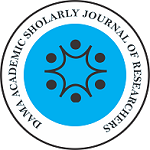Authors: Alfreds Simon Duka
Magister Student at Department of Epidemiology, Faculty of Public Health, Airlangga University, Indonesia
Abstract
Three factors which are always interplay in malaria infection process are agent (plasmodium), wet nurse (humans and mosquitoes), and the environment. The process of malaria transmissionis also influenced by the existence of Anopheles sp breeding sites. This research aimed to know the dynamics of malaria transmission in Tablolong village, West Kupang Subdistrict on April-May 2014. The type of this research was a survey, while research design was cross sectional. The population was Anopheles sp in Tablolong village, West Kupang subdistrict, Kupang District, Anopheles sp breeding sites and all malaria sufferers from March until April 2014. The sample was all Anopheleses sp caught, the entire Anopheles sp breeding sites and all malaria sufferers recorded in the malaria register from March until April 2014. The number of mosquitoes that bite people both inside and outside home in an hour was calculated by using the formula of mosquitoes density wherein the amount of Anopheles sp caught divided the number of hours then multiplied by the number of mosquito collectors. Observations and measurements were committed from 6 pm until 12 pm indicated that Anopheles sp was found most outside of the house with a density of 1.91 biting tail/hour/person in the research site. Results of the study showed that most cases of malaria sufferers were in 100 metres which is near to Anopheles sp breeding sites. It could be concluded that the most malaria sufferers’ location stood about 200 meters from Anopheles sp. breeding sites.
Keywords: The bite density, mosquitoes, distance of malaria sufferers’ location

